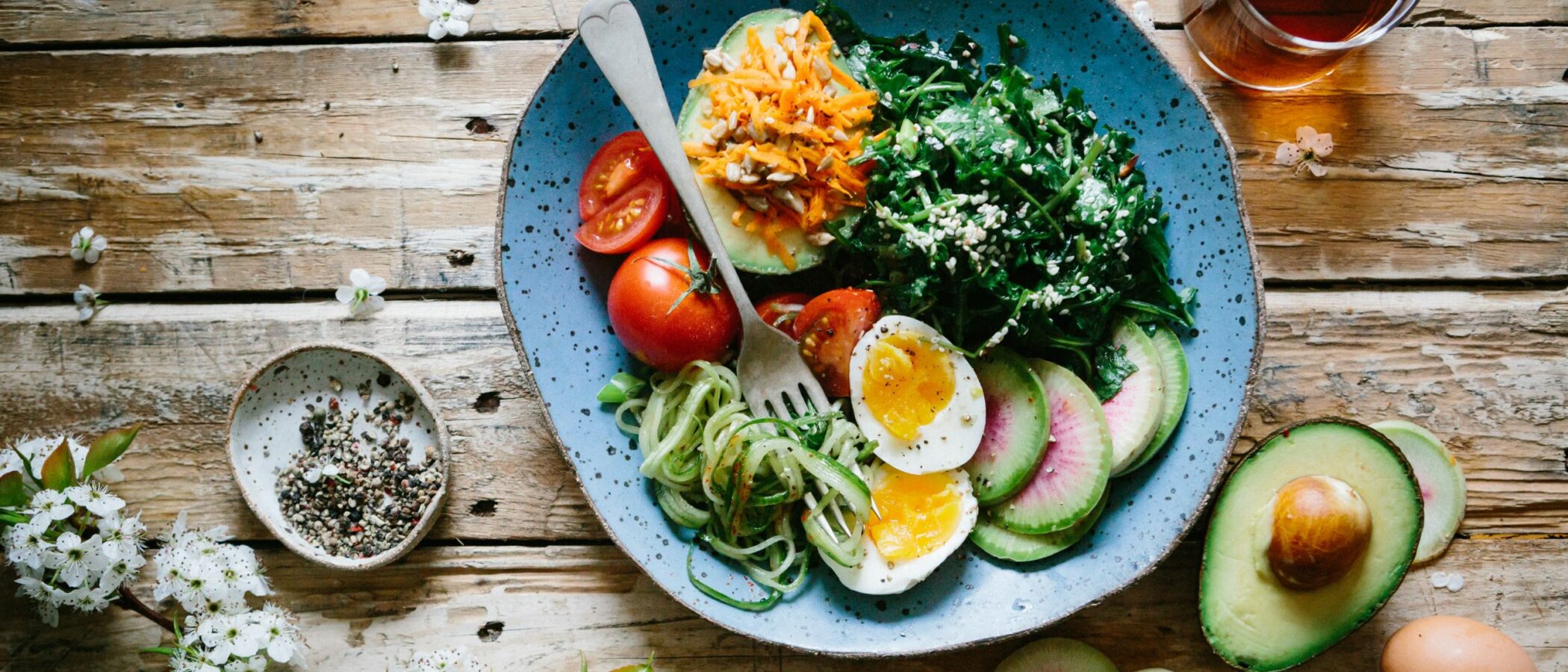
Climate Friendly Eating
The foods we eat have a major impact on the environment. About a third of the world’s greenhouse gas emissions come from food systems, including the growth, processing, transportation, distribution, preparation, consumption, and disposal of food. We strive to make climate-friendly eating accessible to students through local and sustainable food purchasing, Coolfood Meals, and a daily vegan Plant Forward station in both dining halls.
What is “Climate Friendly Eating?”
By 2050, when nearly 10 billion people will live on the planet, we must produce 56 percent more food than we do today. At the same time, greenhouse gas (GHG) emissions from agriculture and land-use change must drop by two-thirds to limit global warming in line with climate scientists’ recommendations (World Resources Institute).
Of course, we still need to eat, so we need to find a less resource-intensive way to do it! Climate-friendly eating is an approach to food consumption that fulfills all your nutritional needs without compromising the health of the planet. This means prioritizing foods that are less resource-intensive to produce. For example: per gram of protein, beef production requires 20 times more land and emits 20 times more GHG emissions than producing plant-based proteins like beans, peas, and lentils. Switching to a vegan diet can cut your food-related emissions in half, but you don’t have to make a drastic change in your diet to make a difference.
At CDS, we offer many climate-friendly dining options, and we want to make it easy for you to choose low-carbon and sustainable foods. Read below to learn how you can contribute to our efforts:
Eat Plant-Forward Foods
One of the easiest ways to adopt a climate-friendly diet is reducing your meat and dairy consumption. Here are some easy ways you can adopt a more plant-forward diet:
- Try a Coolfood Meal– these low-carbon recipes are certified by the World Resources Institute to have a carbon footprint at least 38% lower than the average regional meal. Try them in both dining halls!
- Try our vegan Plant Forward station in Chase or Top of Lenoir! You can also use filters on our website to identify vegan, vegetarian, and Coolfood Meal offerings.
- Participate in Meatless Mondays! We offer Beyond burgers at our Plant-Forward station every Monday. Swapping one beef burger for a plant based alternative saves enough water to fill 10 bathtubs- 460 gallons!
- Switch to a non-dairy milk like soy, almond, or oat. Plant-based milks require less land and water to produce compared to cow milk, and produce about 3x less GHG emissions.
- Change your plate proportions. You don’t have to cut meat out altogether, but you can experiment with more vegetable heavy dishes that still include a smaller portion of meat. For example, instead of beef tacos, swap half the meat for black beans!
Learn more about Plant Forward eating here.
Choose Local & Seasonal
Approximately 17% of our residential food purchases are from farms and businesses in North Carolina. You can find what’s currently local on our Local Chalkboards updated biweekly in both dining halls. Here’s why eating local is important:
- The average piece of produce in the US travels 1,500 miles before reaching your plate.
- Because local produce has less distance to travel, these crops are picked at peak ripeness, resulting in a tastier dining experience.
- It supports local farmers and benefits the regional economy!
- Small and mid size farms have greater biodiversity, soil health, and use less fertilizer and chemical inputs on average compared to conventional agriculture.
Reduce Food Waste
Over a third of the food in the US goes uneaten, which accounts for at least 6-8% of US GHG emissions. Learn more about our waste diversion efforts here. Below are some ways you can reduce food waste on campus and at home:
- Use Pick Your Portion in the dining halls to request the best portion size for your needs to reduce plate waste.
- Eat your leftovers instead of throwing them away
- Think before you take- reconsider the “all-you-can-eat” buffet mindset
- Make grocery lists so you only buy what you need
- Compost food scraps at home
- Store your produce properly to extend freshness
- Learn what the “best if used by” and “use by” dates mean